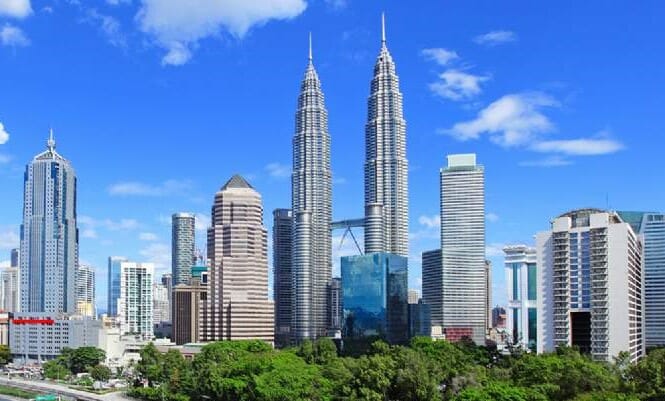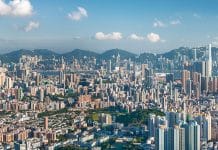Planting trees has quickly emerged as a seemingly simple way to soak up carbon emissions.
As the world is struggling to combat climate change, it seems to be taking hold as a panacea for curing the ills of pollution and degrading soil health.
Enthusiasm is growing among government, businesses and individuals for ambitious projects to plant billions of trees for a rapid expansion of reforestation, to help meet their climate targets.
In Malaysia, the ‘100 Million Tree-Planting Campaign 2020-2025’ was launched by former Prime Minister, Tan Sri Muhyiddin Yassin in 2021, as the start of Greening Malaysia agenda across the country.
This activity has also been adopted by companies and other entities to generate carbon credits that they can purchase to offset or cancel out their own carbon emissions, required by Bursa Carbon Exchange (BCX) – a voluntary carbon market (VCM) launched on Dec 9, last year.
New tree-planting technology
While planting trees is good, cutting down an old-growth forest and planting new trees that will take decades to mature, are not a cure-all for tackling global warming and climate change, especially when greenhouse gases (GHG) continue to be emitted.
This issue has been highlighted by many scientists and experts, who suggested that equal focus should be given to halting deforestation and reducing GHG emissions in the first place.
Right from selecting the correct species to monitoring and maintaining saplings and planning for large-scale tree plantation, effective tree plantation goes beyond just planting of the trees.
Technology can assist in achieving the latter. For instance, Planters International Bhd managed to adopt Active Forest Asset Management (AFAM) System to monitor tree growth in its six conservation project sites of forest reserves in Peninsular Malaysia.
According to its chairman Prof M. Sadruddin, the six conservation project sites are in Relai Permanent Forest Reserve, Rek River Forest Reserve and Ulu Temiang Permanent Forest Reserve in Kelantan; Besul Forest Reserve in Terengganu, Chini Permanent Forest Reserve in Pahang and Bukit Cerakah Permanent Forest Reserve in Selangor.
He said the AFAM is the combination of the best techs in climate control, geotagging, drone, Radio-frequency identification (RFID) and topographic scans to identify and manage all the trees in the Planters Enrichment & Reforestation Programme project sites as well as to monitor and measure the natural carbon storage of different kinds of trees.
“We have our own data store with advanced analytics, namely Planters, which contains advanced analytic on calculating the availability of forested land and establish long-term trends of forest cover from historical data.
“We examine the tree conditions by using RFID data to extract tree location, type, height and dimensions, and tree biomass. From the type of trees and their calculated biomass, the carbon stored in trees is calculated using tree-specific models, including their above and below ground biomass.
“Then, we ascertain the tree species and calculate the carbon stored in each tree by using the calculation formula in accordance with the 5th National Forest Inventory (IHN5) by the Forestry Department of Peninsular Malaysia,” he told Bernama recently.
He said each of the trees are geotagged and recorded for management purposes according to its Global Positioning System (GPS) coordinates and topographic conditions, as well as close monitoring and surveillance using high tech drone system.
“We carry out forest management activities and all its components that include planting, replanting, transplanting, conserving of forest, operation of forest tree nurseries and forest plantation.
“Most of our projects are through the collaboration with State Government, Forest Department, Ministry of International Trade and Industry (MITI), Ministry of Natural Resources, Environment and Climate Change (NRECC) and CIMB,” he said adding that no logging is allowed in the managed areas.
Prevent Biodiversity Loss, Generate Carbon Credits
M. Sadruddin explains that besides monitoring tree growth, they also deploy thermal drones to ascertain the animal species to assist in ground observation.
“Additionally, the system will identify live animals through the latest high precision thermal imaging technology.
“The animals in sightings are tapir, elephants and foxes, which allow us to identify their whereabouts around our project sites,” he said.
He added as for companies seeking to offset their carbon footprint with carbon credits, those data could help them determine the best locations and help them monitor the tree planting progress.
“Some of the companies and entities are using our service to plant trees to generate carbon credits as per required by BCX. Hence, we updated them with the data that are collected through the project sites,” he said.
Save key tree spesies from extinction
In the fight against climate change, trees are vital tools, as they have the ability to capture carbon from the atmosphere and store it for generations.
However, human activities such as logging, plantations and development have caused deforestation which contributes to increased biodiversity loss.
Hence, there is a need to save key tree species from extinction and restore tropical rainforests throughout the country, said Tropical Rainforest Conservation and Research Centre (TRCRC) Lead Analyst, Dr Lee Jo Kien.
Jo Kien said that as much as 80 per cent of Malaysian rainforest canopies are dominated by the Dipterocarpaceae family of trees, of which more than half of the species in Peninsular Malaysia are considered threatened.
“Many dipterocarps have a slow reproductive cycle in which seeds are produced only during mast fruiting events which occur every five to seven years, during El Nino years.
“Coupled with their low survival rates in the wild and short range of seed dispersal (up to 30m from the parent tree), the odds truly are stacked against them,” said the ecologist adding that getting enough seeds to start a collection takes patience.
“Adding to the conservation challenge, the dipterocarps have seeds that cannot be stored in seed banks due to their high-water content, which renders them unviable for freezing.
“They must be germinated within a few days or they die,” he added.
The recalcitrant seeds rescued from forest fragments are planted out with seeds from different parents to avoid inbreeding and to create a living collection of trees that can reproduce perpetually.
“The living collection would serve as a gene bank to provide seedlings uniquely adapted to their collection sites, for future restoration,” he said adding that a total of 30,000 seeds were collected in 2022.
As addressing biodiversity loss and restoring tropical rainforests in Malaysia have been TRCRC’s focus since its establishment in 2012, Jo Kien said beyond just planting trees, they are restoring function, diversity and resilience to ecosystems while trying to provide sustainable livelihoods for indigenous peoples and local communities (IPLCs).
Besides tree species conservation, TRCRC also engages with IPLCs to collect the seeds of wild fruit trees, dipterocarps and other target species from the forests adjacent to their villages.
“For example, we worked with the Orang Asli Jahai in the Royal Belum State Park for seed collection and to establish native tree nurseries, in collaboration with The Habitat Foundation and the Perak State Parks Corporation (PSPC).
“The Orang Asli Jahai from Kampung Klewang and Kampung Sungai Tiang, Perak collected seeds of wild fruit trees, dipterocarps, and other target species from the forests adjacent to their village based on the TRCRC’s requirements.
“TRCRC also provided training and mentoring for locals who led the programme in their village.
“The saplings were then acquired for forest restoration through a seedling buyback mechanism where corporate and other sponsors can source for the right seedlings from the people that are closest to and are most impacted by the Central Forest Spine (indigenous peoples and local communities),” he said.
Free tree society
Free Tree Society (FTS) General Manager Carolyn Lau said planting trees in the house compound is one of the most effective strategies to reduce the heat effects from climate change, together with creating a greener and more beautiful environment.
She said FTS has worked tirelessly to inspire a community of environmental stewards by giving away trees for free and producing a wide range of nature-based activities since 2012.
“As of February 2023, we’ve given away 52,004 trees.
“All our free plants are grown from seeds or cuttings from our nursery garden. For the labour, we have volunteers who help us and whom we train as environmental stewards – it’s a beneficial exchange of knowledge for work. They help to keep our trees free,” she said, adding that FTS has two nurseries, namely in Bangsar and Taman Tugu.
Despite lockdowns due to pandemic in 2020-2022, FTS still managed to plant more than 500 native trees in the Pulai Trail at Federal Hill, which is located just behind their Bangsar Nursery, a site of one of the NGO’s popular nature-based programmes.
She said while the land is government owned, FTS actively maintains the urban forest trail.
“Previously, Bangsar and Federal Hill used to be hectares of rubber estate during colonial times, and even though the hill is now considered secondary forest, one can still find full-grown rubber trees and rubber saplings.
“One goal of the Pulai Trail exercise is to help repopulate its biodiversity. The other is to make sure the small forest becomes beloved by the community; we have witnessed in other parts of the city where the community came together to protect their green space because it was a treasured part of their community.”
“All of the replanting is aimed at supporting wildlife in the area, and eventually increasing biodiversity in what used to be a rubber estate and is now a forest in recovery,” she said.
The consultant landscape architect said the best way to reduce heat in urban areas is through nature-based solutions such as replanting trees.
“We can cut down heat in our cities by planting more trees and making other adjustments in our concrete jungle.
“We need to enhance natural landscapes by creating vertical greenery in high-rise buildings, planting trees in between lanes and setting up more parks.
“This will give shade and enhance wind flow to stop the temperature from rising,” she said.
By Soon Li Wei









